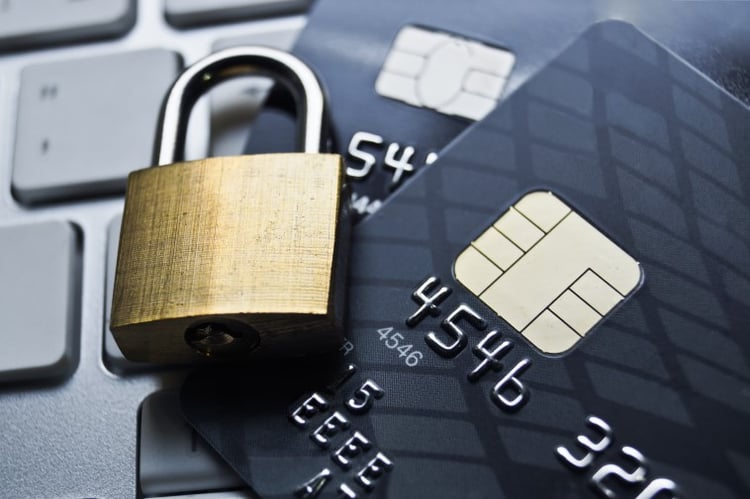
To help minimize unauthorized fuel spend, the best fleet fuel cards offer purchase controls to restrict when, where, and how fueling can occur. Setting fuel card controls that are ideal for the drivers and vehicles that make up your fleet can be tricky. If controls are too restrictive, your drivers may face delays that cost your company money. If they are too lax, it leaves you vulnerable to fraud. So how can you determine which controls are right for your business?
Know your available fuel card controls.
To find the purchase controls that are best for your business, you need to know the available options. Most programs have the following limits available:
- Gallons or dollars per transaction
- Gallons or dollars per day, week, or month
- Transaction per day
- Authorized fueling times and days
- Fuel only or fuel and maintenance
- Driver PINs or Driver IDs
While not widely available, some cards (like OTR and CFN cards) can limit the fuel or product that the driver can purchase. Product restrictions are not only valuable for their ability to prevent unauthorized purchases, but they also can stop drivers from inadvertently putting the wrong type of fuel into vehicles or equipment, which can cause maintenance issues down the road.
Create PINs and driver IDs.
For drivers to fuel, they will first be asked to enter a PIN or driver ID. This 4-6 digit code verifies the driver’s identity and helps to ensure that only your authorized employees use your card.
While they are mostly similar, there is a critical difference in card setup that distinguishes PINs from driver IDs. PINs are used with driver cards, while driver IDs are used with vehicle cards. Driver cards work with one and only one PIN, while vehicle cards draw from a pool of driver IDs. By using driver IDs vehicle cards allow you track both the vehicle and driver for every transaction, information that could be critical if fraud occurs.
When you create your PINs or Driver IDs you want them to be easy to remember, but not easy to guess. So, while the PIN 1234 may be the easiest code for a driver to remember, it is also one of the first codes someone that is not authorized to use the card would guess. On the other hand, a series of random numbers may be the hardest code for someone to guess, but would be difficult for a driver to remember.
A solution to this problem is to use numbers that hold meaning to that driver, and that driver alone. This could be a child's birthdate or a designated employee ID number. Regardless of the chosen number, it is important that the code is not shared with others and is never written on the card. This number is the first line of defense between you and fraudulent use and should be kept secure.
Customize controls by driver and/or vehicle.
Once you understand the restrictions available to you, you can start applying these restrictions to your cards. If all your drivers and/or vehicles have similar needs, then it is ok to create one card restriction template and use it for all your cards.
However, if you have different types of vehicles or if your employees have different schedules or tasks, it is highly recommended that you customize your purchase controls so that they match the individual driver or vehicle needs. A pickup doesn’t need as much fuel as a box truck, which doesn’t need as much fuel as a semi. Card controls are fully customizable, so only give drivers as much access as they need.
Avoid fuel card limits that are too strict.
You might think setting the strictest limits possible would be best for reducing company fuel card abuse and fraud. While they might be best for stopping fraud, overly strict limits can also stop your drivers from getting the fuel they need and slow down your business.
In these cases, an authorized company employee would need to contact your vendor and approve changes to limits before any purchases can be made. This issue can be mitigated through the effective use on online tools, but, depending on the circumstances, overly strict card restrictions can still delay drivers significantly.
Drivers that are unable to purchase fuel because of overly strict controls might have to use alternative forms of payment to avoid delays. This prevents cards from collecting transaction data, leading to problems with reports. It also exposes the company to risk, as it bypasses your cards’ ability to restrict unauthorized purchases.
Do not set restrictions too high.
With the problems that can arise from overly strict controls, it might seem better to set limits far above a driver’s or vehicle’s expected fuel usage to prevent any unnecessary delays. However, overly lax restrictions are as bad, if not worse, than overly strict limits.
When card controls are set to too high, unauthorized purchases cannot be effectively prevented. Furthermore, if fraud occurs, transactions can continue for an extended period, allowing unauthorized purchase totals to add up to large sums before they can be detected and stopped.
How to set fuel card controls that are right for your business.
The key to using card controls effectively is setting limits that match your fleet’s needs as closely as possible. To do this, ask yourself this series of questions so that you can properly frame your cards expected usage around your available controls.
- What type of vehicle or equipment will the card be used for?
- How much fuel do you expect this vehicle or equipment to use?
- When will drivers need to use their cards?
What type of vehicle or equipment will the card be used for?
First, consider the type of vehicle or equipment that a card will be used for. If your company fuel cards include restrictions based on fuel type or product, only include the products that each vehicle or piece of equipment uses. Dollars or gallons per transaction limits should be set to accommodate the entire fuel tank so that drivers are capped at the maximum amount of fuel they could need at one time.
If you opt to use driver cards, consider all of the vehicles and pieces of equipment that a card will be used for. Make sure to set your restrictions so that they accommodate the largest piece of equipment.
How much fuel do you expect this vehicle or equipment to use?
Next, consider how much fuel each vehicle or piece of equipment is uses. Large trucks driving long distances likely need high daily, weekly, and/or monthly limits. Smaller vehicles that travel locally should have significantly lower daily, weekly, and/or monthly limits. Be sure to include reefer units or other equipment needs when you calculate a card’s expected fuel use.
Also consider how many transactions per day a vehicle and/or piece of equipment requires. If you use driver cards, think about how often drivers need to fuel the vehicles and equipment they are responsible for. It is best to allow cards one extra transaction above this figure per day. This is because authorization failures can count against a card’s daily transaction limit. If there is no buffer to accommodate this, there can be issues when a driver tries to use their final daily transaction.
When will drivers need to use their cards?
Finally, consider when drivers will need access to their card. While it is not always the case, time and day fleet card restrictions should usually match company hours. This helps prevent employees from using their card for personal vehicles.
Alerts can provide oversight.
There are situations where you have to leave a card more open than you want for a variety of reasons. In these cases, you can use email alerts to help protect your business from unauthorized purchases..
For example, some employees may need 24-hour access in case of emergencies. In these situations, time and day restrictions would be prohibitively restrictive. Instead, you should opt for an alert that sends an email whenever a transaction is made outside of business hours allows drivers to get the fuel they need, while still keeping you informed of any irregular transactions.
Update your card limits.
When you first set your fuel card controls, you may have anticipated your company use to be higher or lower than what your fleet uses. You may want to review your spending a few months into your program and adjust your restrictions so they better match your fleet’s needs. You can make these changes at any time, including when you add vehicles, hire new drivers, or book a new client.
Adjustments can be either temporary or permanent and should be regularly reviewed to ensure they accurately reflect your fleet’s needs. Most vendors offer online tools that allow you to view and adjust your cards’ restrictions at any time, making this process quick and easy.
Conclusion
The fuel card purchase controls you establish should fit the unique needs of your business. You can begin this process by reviewing the options available, then asking key questions about how you expect cards to be used. Alerts can also help notify you of suspicious transactions, but it may be more impactful to establish a fuel card policy with you drivers. This makes drivers aware of their expectations and the controls on the cards, stopping fraud before it can be attempted.




